Matisse in the Studio, Royal Academy review - a fascinating compilation | reviews, news & interviews
Matisse in the Studio, Royal Academy review - a fascinating compilation
Matisse in the Studio, Royal Academy review - a fascinating compilation
Intriguing insight into the artist's relationship with his possessions
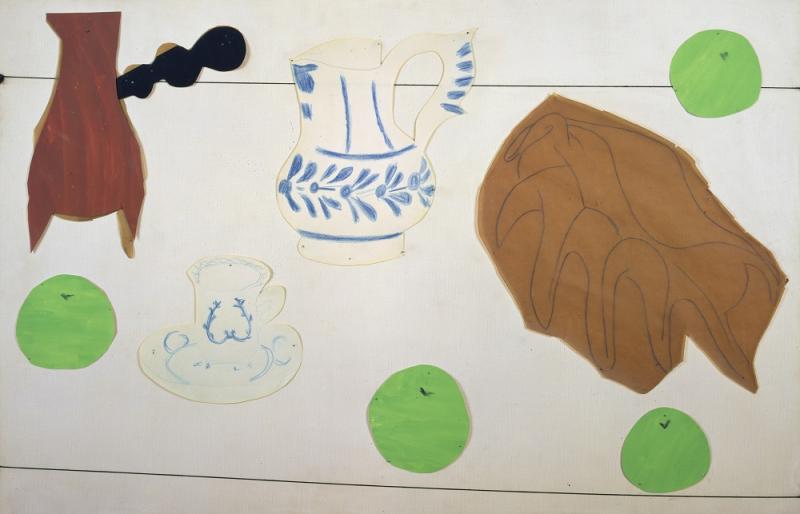
A 19th-century silver and wood pot in which to make chocolate, pertly graceful; 17th-century blue and white Delftware; a Chinese calligraphy panel; a 19th-century carved wooden god from the Ivory Coast; a bronze and gold earth goddess from South-East Asia. These are but a tiny sampling from the multitude of objects with which Matisse surrounded himself in his studio(s).
Matisse thought to ennoble the humblest of objects, to find delight in the unexpected. He collected sculpture and masks from Africa during a period when indigenous and often religious and ritualistic art was being appreciated out of context by the most avant-garde artists at the turn of the last century. Indeed primitivism (now no longer a word one can use with any ease) or ethnographic material was hugely influential for both Picasso and Matisse, as for scores of others.
What’s not to like about a fine selection of paintings, drawings, sculptures and collages by Matisse put together here with a significant collection of the objects among which he lived? His studio was integrated into his home for much of his life. Photographs show him at ease with his models in this crowded environment, and embody a contradiction: while Picasso lived hard, publicly and socially, Matisse was peculiarly genteel, often working in a white coat as though simply a technican, sometimes even in his suit.
 What is fascinating in this compilation is the chance to understand what, beyond his models and the views from his windows, caught his eye, often to such an extent that ownership became an important objective. The relationship between the painting or sculpture and its inspiration can be startlingly direct. The Serpentine, modelled in 1909 and cast in 1948, has a direct relationship to Nang Thoranee, the profoundly graceful and dignified south-east Asian earth goddess. His bronze Two Women, 1908 (pictured, Hirshhorn Museum and Sculpture Garden, Smithsonian Institution), is taken directly from the image of two young naked Tuareg women, arms entwined, whose photograph was reproduced in 1905 in a publication called L’humanité féminine. An arrangement of objects on a black marble table top – pot, cup and saucer, jug, fruit, shell – photographed in his Nice studio in 1946 is the infrastructure for the 1940 painting Still Life with Seashell on Black Marble (main picture). The value is to witness the talented alchemy of the artist: from the ordinary to art, transformed by the artist’s eye and hand.
What is fascinating in this compilation is the chance to understand what, beyond his models and the views from his windows, caught his eye, often to such an extent that ownership became an important objective. The relationship between the painting or sculpture and its inspiration can be startlingly direct. The Serpentine, modelled in 1909 and cast in 1948, has a direct relationship to Nang Thoranee, the profoundly graceful and dignified south-east Asian earth goddess. His bronze Two Women, 1908 (pictured, Hirshhorn Museum and Sculpture Garden, Smithsonian Institution), is taken directly from the image of two young naked Tuareg women, arms entwined, whose photograph was reproduced in 1905 in a publication called L’humanité féminine. An arrangement of objects on a black marble table top – pot, cup and saucer, jug, fruit, shell – photographed in his Nice studio in 1946 is the infrastructure for the 1940 painting Still Life with Seashell on Black Marble (main picture). The value is to witness the talented alchemy of the artist: from the ordinary to art, transformed by the artist’s eye and hand.
This is hardly an unusual way of looking obliquely at an artist’s work. But it is rare to see the real objects and their depictions united outside their home base, or brought together from several collections. The ethnographic material is marvellous, acquired with an artist’s eye: full of conviction, powerful and heavily stylised shapes, predicated on the human form, minimised, ornamented, played with to convey a sense of some kind of magical power. The brilliant minimalism of some of their representations of the human form are echoed in the drawings where just a handful of lines show us a face, a body.
 The bowls, vases, glasses and pots were obviously enjoyed for shape and colour, for the seduction of their smooth surfaces, and subtle decorations. The textiles exhibit elaborate and satisfying patterning, and wild combinations of colours. A whole wall is hung with such delights, faithfully echoed in a marvellously exuberant painting The Moorish Screen, 1921 (pictured © Philadelphia Museum of Art). Pattern was crucially important to Matisse: as he said, the subject and its background had the same value. And some of his most famous paintings are indeed of his studio: MoMA’s masterpiece The Red Studio is one such work. There are also some still-life paintings which centre on vases of flowers, the kind of arrangements we see in photographs of his studios.
The bowls, vases, glasses and pots were obviously enjoyed for shape and colour, for the seduction of their smooth surfaces, and subtle decorations. The textiles exhibit elaborate and satisfying patterning, and wild combinations of colours. A whole wall is hung with such delights, faithfully echoed in a marvellously exuberant painting The Moorish Screen, 1921 (pictured © Philadelphia Museum of Art). Pattern was crucially important to Matisse: as he said, the subject and its background had the same value. And some of his most famous paintings are indeed of his studio: MoMA’s masterpiece The Red Studio is one such work. There are also some still-life paintings which centre on vases of flowers, the kind of arrangements we see in photographs of his studios.
What is missing here and perhaps impossible to accomplish is any sense (beyond photographs) of what the light in the studio, and the profusion of objects of all kinds, actually looked and felt like. But we glimpse what he saw in the things with which he surrounded himself. It is not an accidental accumulation: he chose these objects from many times and geographies. This anthology is an attempt to show something of the mystery of Matisse’s alchemical – and physical – skill as he transformed the things he saw around him through the crucible of his imagination into his art.
More images from Matisse in the Studio (click to enlarge)
rating
Explore topics
Share this article
The future of Arts Journalism
You can stop theartsdesk.com closing!
We urgently need financing to survive. Our fundraising drive has thus far raised £49,000 but we need to reach £100,000 or we will be forced to close. Please contribute here: https://gofund.me/c3f6033d
And if you can forward this information to anyone who might assist, we’d be grateful.

Subscribe to theartsdesk.com
Thank you for continuing to read our work on theartsdesk.com. For unlimited access to every article in its entirety, including our archive of more than 15,000 pieces, we're asking for £5 per month or £40 per year. We feel it's a very good deal, and hope you do too.
To take a subscription now simply click here.
And if you're looking for that extra gift for a friend or family member, why not treat them to a theartsdesk.com gift subscription?
more Visual arts
 'We are bowled over!' Thank you for your messages of love and support
Much-appreciated words of commendation from readers and the cultural community
'We are bowled over!' Thank you for your messages of love and support
Much-appreciated words of commendation from readers and the cultural community
 Folkestone Triennial 2025 - landscape, seascape, art lovers' escape
Locally rooted festival brings home many but not all global concerns
Folkestone Triennial 2025 - landscape, seascape, art lovers' escape
Locally rooted festival brings home many but not all global concerns
 Sir Brian Clarke (1953-2025) - a personal tribute
Remembering an artist with a gift for the transcendent
Sir Brian Clarke (1953-2025) - a personal tribute
Remembering an artist with a gift for the transcendent
 Emily Kam Kngwarray, Tate Modern review - glimpses of another world
Pictures that are an affirmation of belonging
Emily Kam Kngwarray, Tate Modern review - glimpses of another world
Pictures that are an affirmation of belonging
 Kiefer / Van Gogh, Royal Academy review - a pairing of opposites
Small scale intensity meets large scale melodrama
Kiefer / Van Gogh, Royal Academy review - a pairing of opposites
Small scale intensity meets large scale melodrama
 Jenny Saville: The Anatomy of Painting, National Portrait Gallery review - a protégé losing her way
A brilliant painter in search of a worthwhile subject
Jenny Saville: The Anatomy of Painting, National Portrait Gallery review - a protégé losing her way
A brilliant painter in search of a worthwhile subject
 Abstract Erotic, Courtauld Gallery review - sculpture that is sensuous, funny and subversive
Testing the boundaries of good taste, and winning
Abstract Erotic, Courtauld Gallery review - sculpture that is sensuous, funny and subversive
Testing the boundaries of good taste, and winning
 Edward Burra, Tate Britain review - watercolour made mainstream
Social satire with a nasty bite
Edward Burra, Tate Britain review - watercolour made mainstream
Social satire with a nasty bite
 Ithell Colquhoun, Tate Britain review - revelations of a weird and wonderful world
Emanations from the unconscious
Ithell Colquhoun, Tate Britain review - revelations of a weird and wonderful world
Emanations from the unconscious
 Rachel Jones: Gated Canyons, Dulwich Picture Gallery review - teeth with a real bite
Mouths have never looked so good
Rachel Jones: Gated Canyons, Dulwich Picture Gallery review - teeth with a real bite
Mouths have never looked so good
 Yoshitomo Nara, Hayward Gallery review - sickeningly cute kids
How to make millions out of kitsch
Yoshitomo Nara, Hayward Gallery review - sickeningly cute kids
How to make millions out of kitsch
 Hamad Butt: Apprehensions, Whitechapel Gallery review - cool, calm and potentially lethal
The YBA who didn’t have time to become a household name
Hamad Butt: Apprehensions, Whitechapel Gallery review - cool, calm and potentially lethal
The YBA who didn’t have time to become a household name

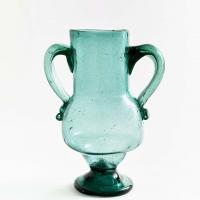
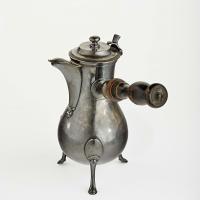
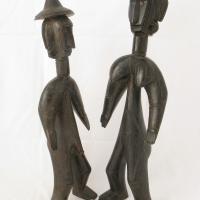
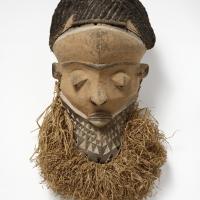


Add comment